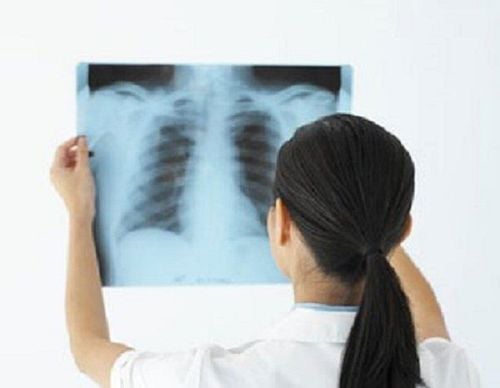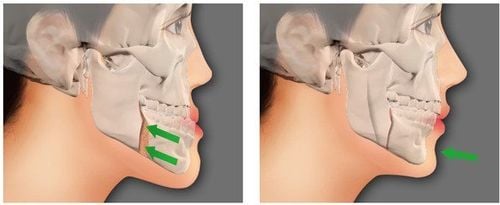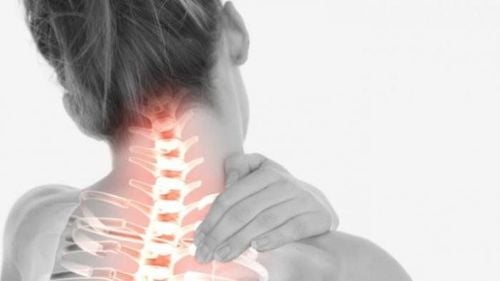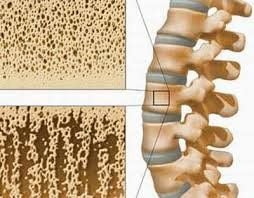This is an automatically translated article.
Fractures in children, often associated with damage to growth cartilage. Growth plate fractures in children affect the growing bone tissue near the ends of a child's bones. Diagnosis of growth plate lesions is by routine x-rays and treatment should be initiated immediately because they can affect the way bones develop, especially in children who are going through puberty.
1. What is growth cartilage in children?
Fractures in children , often associated with damage to growth cartilage . Childhood growth cartilage is the area of tissue near the ends of long bones in children and adolescents that determines the future length and shape of adult bones. Each long bone has at least two growth plates, one at each end. When a child's development is complete - during adolescence - the growth plates close and are replaced by solid bone.
The growth plates in children are the softest and weakest areas of the growing skeleton, even weaker than the tendons and surrounding ligaments. Therefore, growth cartilage damage is very likely to occur. Injuries to the growth plate can result from a single trauma, such as a fall or automobile accident, or from prolonged pressure on the cartilage or repetitive force. Growth plate fractures affect the layer of growing tissue near the ends of a child's bones. An injury can cause joint sprains in adults but can cause growth spurts in children.
2. Symptoms of growth cartilage damage
Most growth plate fractures occur in the bones of the fingers, forearms, and legs. Signs and symptoms of a growth plate fracture may include:
Persistent pain or pain after a sudden injury. Pain and swelling, especially when touched where the growth plate has broken. Heat and swelling at the ends of bones, near joints. Inability to move, bear pressure, or bear weight of a limb due to pain. Bone head deformity.
3. Causes of growth cartilage damage
Because the growth plate is the last area of bone to harden during growth, children and adolescents are more susceptible to fracture or injury to the growth plate. Growth plate fractures occur twice as often in boys as in girls, because girls end bone growth earlier than boys. By the age of 12, most of a girl's growth cartilage has matured and is replaced by strong bone.
Growth cartilage damage can occur for many reasons. Growth plate fractures are usually caused by a fall or after a force is applied to the ends of the bones, which can occur in:
Traffic accidents Competitive sports or activities that increase the risk of falling or being bumped, for example like football, basketball, baseball pitching, long-distance running or gymnastics. Recreational activities, such as biking, snowmobile, or skateboarding. Sometimes, growth spurts can be caused by overuse, which can result from long hours of exercise or excessive repetitive force on a limb or a specific area of the body. of children.
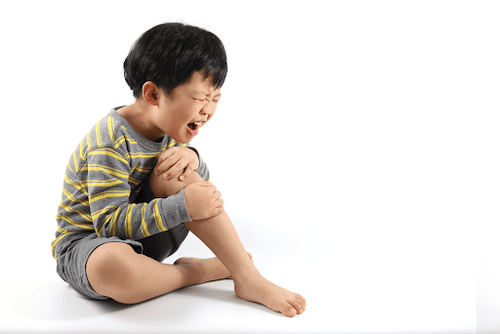
Có nhiều nguyên nhân khác nhau gây tổn thương sụn tăng trưởng ở trẻ em
4. Classification of growth cartilage damage
The Salter-Harris classification system divides most growth plate injuries and fractures into five categories.
Type I: occurs when the fracture passes directly across the growth plate but does not involve the surrounding bone. Type II: occurs when the fracture extends upward or away from the growth plate. This is the most common type of growth plate fracture. Type III: occurs when the fracture extends below the growth plate. Type IV: occurs when the fracture extends from the growth plate through the metaphysis and epiphysis. Type V: occurs when the growth plate is crushed. This type of fracture is very rare. Children with growth plate and bone head lesions (types III and IV) or crushed growth cartilage (type V) have a worse prognosis.
Most growth plate injuries heal without complications. But the following factors can increase the risk of bones becoming crooked, overgrown, or stunted.
Severity of injury. If the growth plate is displaced, ruptured, or crushed, the risk of limb deformity is greater. Age of the child. If the growth plate is permanently damaged at a younger age, there is a greater chance of developing deformities. If the child is almost done growing, permanent growth plate damage is likely to cause only minimal deformity. Location of the wound. The growth plates of cartilage around the knee are more susceptible to injury. Cracks or breaks in the growth plate in the knee can make the leg shorter, longer, or crooked if the growth cartilage damage is permanent. Injuries to the growth plates around the wrist and shoulder usually heal on their own with no problems.
5. Diagnostic imaging of growth plate damage
Because the growth plates have not yet hardened into solid bone, the lesion is difficult to interpret on an X-ray. Doctors may order X-rays of both the injured and contralateral limbs so that they can be compared. Sometimes at the time of injury, a growth plate fracture cannot be seen on an X-ray. If your child has pain at the growth site, the doctor may recommend a cast or brace to protect the limb. The X-ray will be done again in three to four weeks, and if there is a fracture, new bone will usually be seen by that time.
For more serious injuries, the doctor may order magnetic resonance imaging (MRI), computed tomography (CT) or ultrasound.
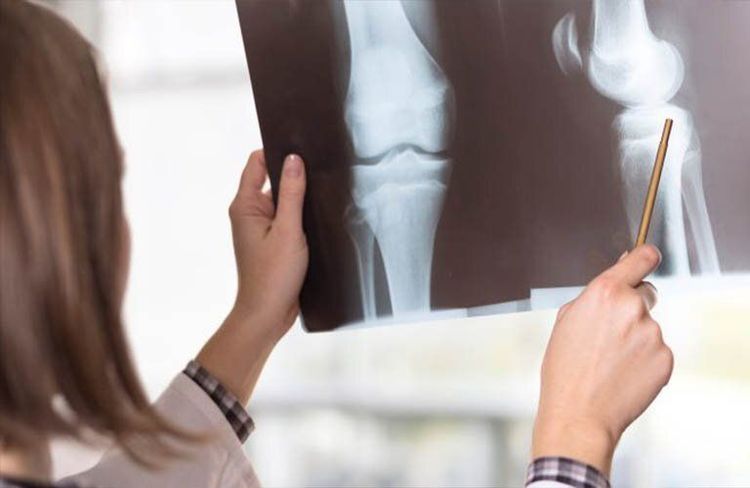
Chụp X – quang giúp bác sĩ có thể chẩn đoán xác định tổn thương sụn tăng trưởng ở trẻ
6. Treatment of growth cartilage damage
Treatment of a growth plate fracture depends on the type of injury and the severity of the fracture. Treatments need to be started right away because they can affect the way bones grow, especially in children who are going through puberty. Less severe fractures usually require only a cast or splint. If the fracture crosses the growth plate or enters the joint and does not align well, surgery may be necessary. Growth plates that are reconstructed surgically may have a better chance of recovering and growing back than non-surgical growth plate lesions.
Specifically, the treatments for growth plate fractures include:
Immobilize the broken cartilage and reduce displacement with a cast or splint after normal alignment of the cartilage has been established to prevent migration. deflection, allowing the bone to rest. To help promote healing, children and adolescents should limit any activity that puts pressure on the injured area. Surgery. Some growth plate injuries require surgery to correct and immobilize the bone. The need for surgery depends on the location and extent of the injury, the effect the damage has on nearby nerves and blood vessels, and the age of the child. Surgical procedures often require smooth metal pins to hold the bone in place without causing premature fusion of the injured growth plate. After surgery, doctors often cast a cast to immobilize the injured area. The cast is left in place until the wound heals. Strengthening exercises and range of motion. Your doctor may recommend exercises to strengthen the muscles that support the injured cartilage after the wound has healed. Strength training can help improve mobility. If the injury is severe or treatment is delayed, a growth plate fracture can disrupt normal bone growth. For example, bones may be crooked or slightly longer or shorter than expected. With immediate treatment, most children and adolescents recover without other growth problems. How soon a child can return to normal activities and participation in sports depends on the child's recovery and the type of activity.
It is sometimes difficult to tell if the growth plate is permanently damaged. Your doctor may recommend that your child have an X-ray examination for several years after a meniscus fracture to make sure that the growth plate is developing appropriately. Depending on the location and severity of the broken cartilage, your child may need to be seen again until bone growth is complete.
With many years of experience in examining and treating musculoskeletal diseases, performing orthopedic surgery, now Vinmec International General Hospital has become one of the health care centers large, capable of examining, screening and treating many diseases in depth. Therefore, if the child shows signs of growth cartilage damage, parents can take the child to Vinmec International General Hospital for examination, diagnosis and treatment to help restore health quickly. Musculoskeletal doctors and doctors at the Orthopedic Trauma Center with expertise and experience will combine consultations and implement the most advanced diagnostic methods available today to assess the patient's condition. and specify a specific treatment regimen.
Please dial HOTLINE for more information or register for an appointment HERE. Download MyVinmec app to make appointments faster and to manage your bookings easily.
References: mayoclinic.org, niams.nih.gov, msdmanuals.com




